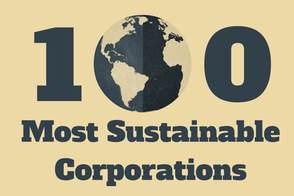Choosing a light bulb is no longer a simple task. Each bulb has its own defining features and depending on if you want to drastically reduce your electricity bill or if you're environmentally conscious, your choice of bulb can differ greatly. Understanding the differences between incandescent, compact fluorescent (CFL), and light-emitting diode (LED) light bulbs will make your decision that much easier.
Distinguishing Between Bulb Type
Incandescent bulbs
Incandescent are the bulbs that first come to mind when buyers consider lighting. However, these inexpensive bulbs are gradually being phased out because of their lack of efficiency. Incandescent bulbs produce light by using a filament that’s heated to the point of glowing. Because 90% of the power required to provide the desired brightness is emitted in heat rather than visible light, they're not as energy efficient as other options. A number of specialty incandescent bulbs will remain available.
Incandescent at a glance:
- Lifespan of between 700 to 1,000 hours (an average of 1 year)
- Bulb costs $0.84
- Does not contain mercury
- Can be used with a dimmer switch
- Best used for task lighting that demands high levels of brightness
- Several types include, General Service, Halogen, Relectorized and Xenon
- Annual operating cost of $219.06 per year
Fluorescent bulbs
Fluorescent bulbs are commonly seen in the workplace. They appear to be the better option since they use a third of the electricity that an incandescent uses and last up to 20 times longer. However, some are weary of florescent because the bulbs produce light by applying electricity to mercury vapor which than emit UV lights causing the bulb to glow. Because fluorescent bulbs contain mercury, it is important to dispose of them properly.
Fluorescents at a glance:
- Gives a flat, cold light, often bluish and harsh. Colors appear dull and unnatural.
- Is a daylight-equivalent and cannot be put on a dimmer.
- Have a delay or flicker when turned on
- Fluorescent bulbs work well to light large areas like basements or attics
- Fluorescent tubes will not work without a ballast.
Compact fluorescent bulbs (CFLs)
CFLs are the next best option when considering efficiency. Unlike the old fluorescent lights, CFLs are quiet, instantly turn on and have warmer, color-corrected tones. Unfortunately, they function in the same way fluorescents do, meaning these bulbs do contain mercury. Although their mercury content is far less than standard fluorescents. These bulbs can be used in place of incandescents in standard lamp sockets or anywhere else you would use a typical incandescent light bulb.
CFLs at a glance:
- 80% energy saving
- Lifespan of 6,000 hours (10 year average)
- Bulb costs $2.49
- Annual operating cost of $53.06 per year
- Should be recycled
- Consumes 1/4 of the energy that incandescent bulbs do and last 10 times longer
- Used in recessed downlights, wall sconces, and track lights.
- Avoid use in workshops. Bulbs cannot hold up to the stress of power surges
Light Emitting Diodes (LEDs)
LED lighting is generally the more efficient and longer lasting light source. It is so efficient that it is being developed for more and more applications within the home. What makes LEDs so energy-efficient is the way they produce light. An LED is a chemical chip embedded in a plastic capsule that uses an electric current to illuminate the bulb. The heat produced from the current is absorbed into a heat sink, keeping the bulbs cool to the touch.
LEDs at a glance:
- 90% energy saving
- 25 year lifespan
- Instant crisp bright light
- Does not contain mercury
- Popular in under-cabinet strips and some types of downlights.
- Unfortunately, they're not ready to supplant all other bulbs yet.
- Do not contribute to heat build up which helps save on air conditioning.
- Provide only directional light, not diffused light. Rarely used for room illumination.
WESCO Electrical Supplies
When it comes to meeting customers lighting requirements and customized solutions, WESCO’s highly experienced Lighting Team is the only resource you need. WESCO’s network of branches delivers industrial supply products fast, and their vast catalog of supplier partners enables WESCO to be your one-stop shop for electrical products. Working with WESCO within a CoVest membership, you will have access to:
- World-class eCommerce site and centralized Global Account Management through Wesco Express supported by industry leading implementation team
- A constantly evolving line of lamps, fixtures, ballasts, dimmers, sensors, and controls, including emergency and special application lighting
- Highly competitive mark-up rates for non-market basket items
- A national network of preferred turnkey partners focused on lighting upgrades and retrofits
WESCO is a new provider of CoVest Sourcing Network. Adding the WESCO offering has proven successful among our members, with 9 CoVest members either in the process of or have completed implementing this category.
To find out more, visit WESCO at www.wesco.com or to view CoVest's deal structure with WESCO visit, www.covest.com
Find out which CoVest suppliers are on the list of 100 Most Sustainable Corporations



